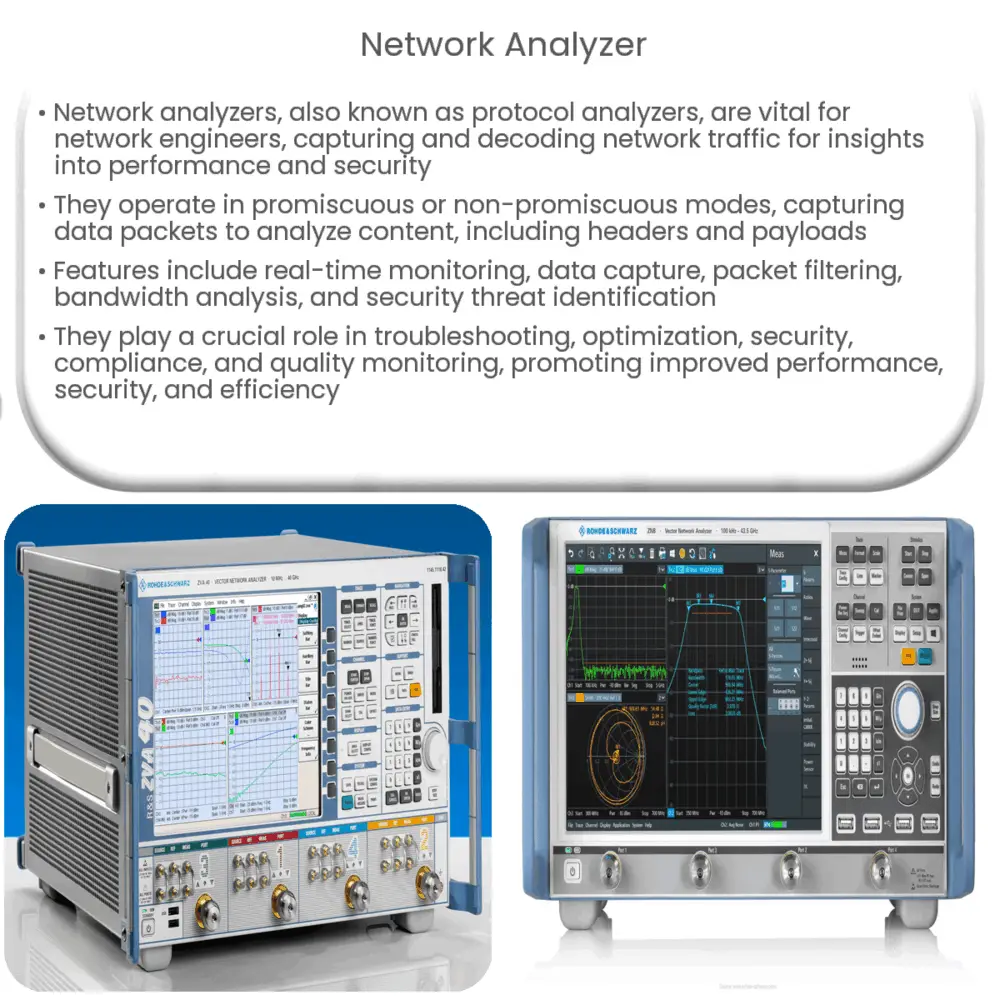A network analyzer is a tool that captures, analyzes, and decodes network traffic, offering insights into performance, security, and network health.

Network Analyzer: An Essential Tool for Network Engineers
Introduction
A network analyzer, also known as a protocol analyzer or packet analyzer, is a critical tool for network engineers, IT professionals, and security experts. It is designed to capture, analyze, and decode network traffic, providing valuable insights into the performance, security, and overall health of a network. In this two-part article, we will discuss the fundamentals of network analyzers, their applications, and some of the best tools available in the market. In this first part, we will cover the basics of network analyzers, how they work, and their key features.
What is a Network Analyzer?
A network analyzer is a software or hardware tool used to monitor and analyze network traffic. It intercepts data packets transmitted over a network and decodes the information contained within them. This allows users to gain valuable insights into network performance, diagnose issues, identify potential security threats, and optimize overall network efficiency.
How Does a Network Analyzer Work?
Network analyzers function by capturing packets of data that traverse a network. They operate in one of two modes: promiscuous mode or non-promiscuous mode. In promiscuous mode, the network analyzer captures all packets on the network, regardless of their destination. In non-promiscuous mode, the tool captures only those packets that are specifically addressed to it.
Once the data packets have been captured, the network analyzer decodes and analyzes the packet contents, which may include header information, payload data, and metadata. This decoded data can then be presented in a human-readable format, allowing network administrators to monitor and troubleshoot their network’s performance and security.
Key Features of a Network Analyzer
While the specific features of network analyzers may vary depending on the tool, some common functionalities include:
- Real-time network monitoring: Network analyzers can provide a live view of network traffic, helping administrators identify and address issues as they arise.
- Data capture and storage: Network analyzers can capture and store data packets for later analysis, allowing for in-depth examination of network performance over time.
- Packet filtering: Many network analyzers offer customizable filtering options, enabling users to focus on specific types of packets or network traffic based on predefined criteria.
- Bandwidth utilization analysis: Network analyzers can help determine which devices, applications, or users are consuming the most bandwidth on a network, facilitating better resource allocation and optimization.
- Security analysis: By monitoring network traffic, network analyzers can help identify potential security threats, such as unauthorized access or malicious activity, and assist in incident response.
In the second part of this article, we will explore various applications of network analyzers, the benefits they provide to businesses and organizations, and some of the top network analyzer tools available in the market.
Applications of Network Analyzers
Network analyzers have a wide range of applications in various industries and scenarios. Some of the most common use cases include:
- Troubleshooting network issues: Network analyzers can help diagnose and resolve network problems such as slow performance, packet loss, and connectivity issues by pinpointing the root cause.
- Network planning and optimization: By analyzing network traffic patterns and resource usage, network analyzers can assist in network capacity planning and optimization to meet current and future demands.
- Network security: Network analyzers can detect and alert administrators to suspicious activities and potential security threats, enabling proactive measures to protect the network.
- Compliance and auditing: Network analyzers can help organizations meet regulatory requirements and conduct audits by providing detailed information about network traffic and usage.
- Quality of Service (QoS) monitoring: Network analyzers can monitor QoS metrics, such as latency, jitter, and packet loss, to ensure optimal network performance for critical applications and services.
Benefits of Using Network Analyzers
Implementing a network analyzer in an organization’s network infrastructure can offer numerous benefits, including:
- Improved network performance: Network analyzers enable organizations to identify and resolve network issues quickly, ensuring optimal performance and minimizing downtime.
- Enhanced security: By monitoring network traffic and identifying potential threats, network analyzers can help organizations maintain a secure network environment.
- Cost savings: Network analyzers can help organizations optimize resource allocation, reduce network maintenance costs, and avoid expensive network upgrades by providing valuable insights into network usage and performance.
- Increased productivity: With better network performance and security, employees can work more efficiently, and IT teams can spend less time troubleshooting issues.
Top Network Analyzer Tools
There are numerous network analyzer tools available in the market, each with its unique features and capabilities. Some of the top network analyzer tools include:
- Wireshark: A popular open-source network analyzer, Wireshark offers a comprehensive set of features for capturing, analyzing, and visualizing network traffic.
- Tcpdump: Tcpdump is a powerful command-line packet analyzer that allows users to capture and analyze network traffic in real-time or from saved capture files.
- PRTG Network Monitor: PRTG is an all-in-one network monitoring solution that includes a built-in network analyzer for real-time traffic analysis and monitoring.
- SolarWinds Network Performance Monitor: SolarWinds NPM is an enterprise-grade network monitoring solution that features advanced network analysis capabilities, including packet capture and deep packet inspection.
- Nagios XI: Nagios XI is a comprehensive network monitoring and management solution that includes a network analyzer module for analyzing and visualizing network traffic data.
In conclusion, network analyzers are essential tools for network engineers and IT professionals looking to monitor, analyze, and optimize their network infrastructure. By providing valuable insights into network performance and security, network analyzers can help organizations maintain a reliable and secure network environment, ultimately leading to increased productivity and cost savings.

